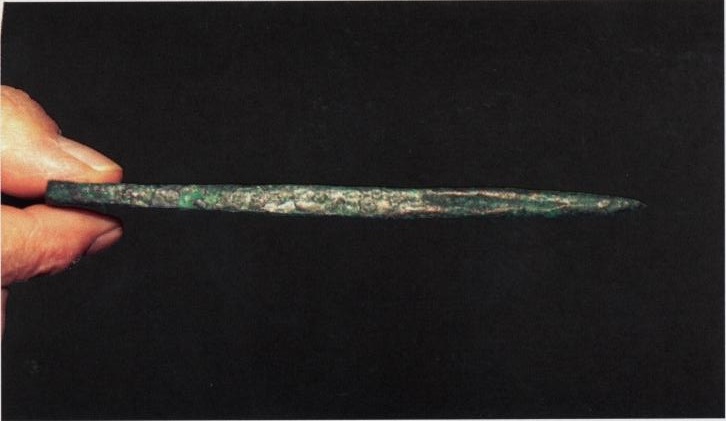by Billy Ford, Spencerville, Ohio
Originally Published in the Central States Archaeological Journal, Vol.56, No.4, pg.200
Originally Published in the Central States Archaeological Journal, Vol.57, No.3, pg.134
More than eighty years ago, Henry Shetrone excavated the famous Seip Mound in Bainbridge, Ohio. This huge mound, measuring 240 feet long, 130 feet wide and 30 feet high, was one of the largest mounds built by the Hopewell people. It was at the center of an semi-circular earthen enclosure.
Henry Shetrone led the team organized by The Ohio Historical Society. The excavations went on from 1925 until 1928, uncovering literally hundreds of artifacts. Some of these amazing artifacts can be seen today at The Hopewell Cultural National Historic Site. However, one piece remained in private hands after the excavations.
In 1926, during the excavations, a trench in the center of the mound suddenly collapsed. Two of the workers were trapped within the trench. Feverishly the other workers attempted to free them, and they were transported to the hospital.

One of them, Florence S. Barrett, had very serious injuries. It was feared she would not live. Luck was on her side, and though she lived with pain the rest of her life, the paralysis the doctors feared did not occur.
Henry Shetrone visited her at the hospital. Feeling terribly sorry for the pain she was enduring, he presented her with several artifacts from the mound, including a wonderful copper axe.

Through the years, though she remained interested in archaeology, she never fully recovered from her injuries. The axe and other artifacts she collected were eventually sold at auction, with this axe being acquired by MaxShipley. It changed hands though the years and eventually ended up with its present owner, who acquired it too at an auction.
Interestingly, Florence Barrett was also a photographer, and several of her photographs were used in Shetrone’s book on the excavations.

Above: Both sides of the Hopewell copper celt from Seip Mound. It is 5 3/8 inches long, 2’/2 inches wide at the bit and just over 3/8 of an inch thick. Seip Mound is in Ross County, Ohio.”Used by Permission of the Author”
To learn more about or to join the Central States Archaeological Society, click here:CSASI.org